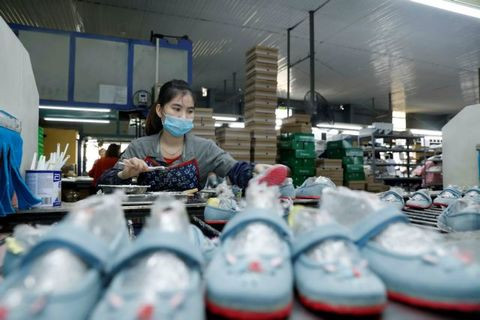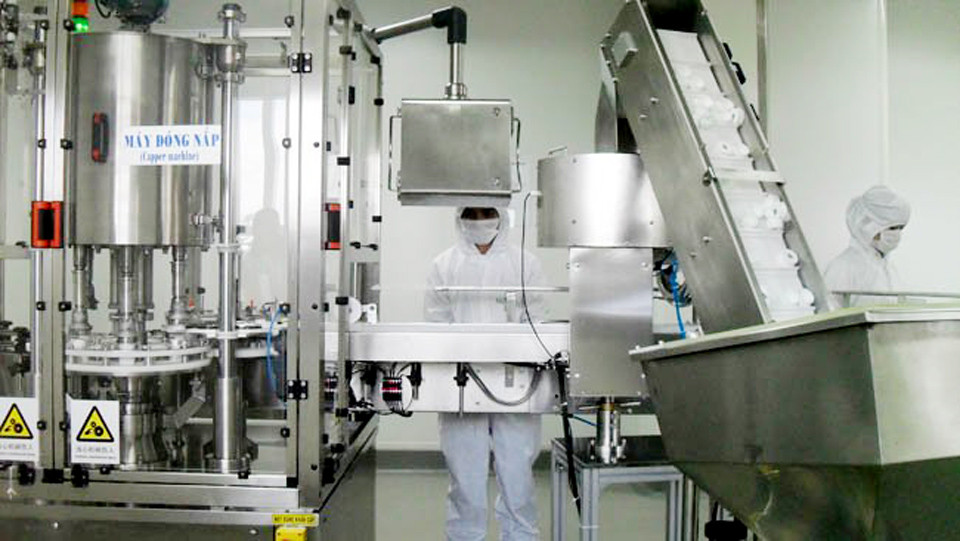
In early April, the WB forecasted that Vietnam's growth rate would be only 5.3% this year, according to the basic scenario, and even worse - 4.4%. These two rates are much lower than the rate of 6.5% made by the WB in October 2021.
The institution explained the reason for the sharp decrease in the growth forecast was due to the difficulties that Vietnam faced when dealing with the Omicron mutation, leading to a very high number of new Covid cases. The economy was also greatly affected by the import of oil with a value of up to 3% of GDP and an increase in prices of imported materials such as iron and steel.
The Asian Development Bank (ADB) and a number of international financial institutions also have lowered Vietnam's growth rate in 2022.
Thus, this year's forecasted growth rate for Vietnam will fall short of the National Assembly's growth target of about 6-6.5% and 2022 is the third consecutive year that economic growth has slowed down significantly.
Downward growth trend
According to expert Nguyen Dinh Cung, with a GDP growth rate of 2.5% in 2021, in order to achieve the minimum goal set for 2021-2025, which is 6.5%, the average growth rate of the four remaining years should be more than 7.5%. However, so far, the most optimistic forecast for 2022 is only 6.6%.
He said that Vietnam’s economic growth over the past 30 years, including three crises, showed that the deepest decrease of the first crisis (1999) was 4.47%, followed by growth recovery of 6.79%.
The deepest decline of the second crisis period (2008-2011) was 5.4%, and the following year it recovered at 6.42%.
The crisis in 2008-2010 due to the impact of the global financial crisis was combined with internal structural weaknesses, and external demand declined, but domestic demand did not decrease as severely as the current crisis caused by the Covid-19 pandemic. Moreover, the growth rate of imports and exports in those years was also at a double-digit rate.

Mr. Cung said developments of the three decades showed that Vietnam’s economic growth gradually decreased. Every 10 years, the average annual growth fell 0.5-1 percentage point. Since 2004, Vietnam has not reached a growth rate of 7.5%.
The country’s growth over the past 30 years showed that this year the growth rate may be only 4-5%, which is a low level compared to the target.
“This analysis shows that the requirements and pressure to innovate and act quickly and strongly have become an unstoppable imperative to achieve the goals for the 2021-2025 term. Otherwise, the average annual economic growth for this period would be around 5%,” he said.
Dr. Dang Kim Son warned about the gloomy economic outlook. The newly released book "Innovation of the growth model - Aspiration for a prosperous Vietnam, on par with the world" edited by Dr. Son reveals a number of scenarios.
If the growth rate is 6% per year, by 2030, Vietnam will be close to becoming a middle-income country, one year behind the target set by the Resolution of the 13th Party Congress. Thus, it will be difficult for Vietnam to achieve the goal of becoming a high-income country by 2045.
If the growth rate is 7% per year, Vietnam may become a middle-income country before 2030, but the goal of becoming a high-income country may still be delayed by 1-2 years, not by 2045 as its ambition. The growth rate of 7% almost meets the two development goals set by the 13th Party Congress.
If the growth rate is 8% per year, Vietnam will become a high-middle-income country by 2030 and a high-income country 2-3 years earlier than the goal by 2045.
Dr. Son said that the current growth model of Vietnam has made the economy "swirl within the middle-income trap". The opportunity to break out and go above it is real if the country switches to a new growth model.
Economic restructuring has been discussed for the past 10 years, beginning in the 11th Party Congress in 2011, but there has been no fundamental change.
Lan Anh